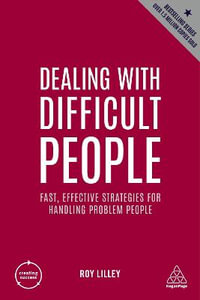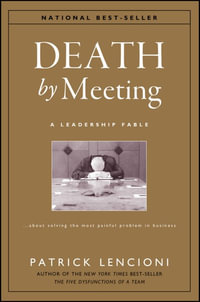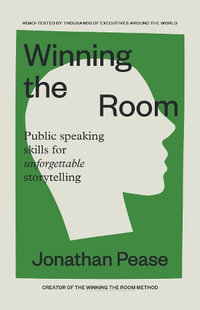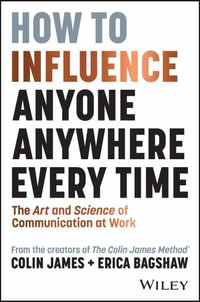Each Chapter opens with a "Chapter in a Nutshell" summary. Each Chapter ends with "Summary: A Toolbox," Review and Discussion Questions, and Group/Role Play exercises. Preface PART 1: FOUNDATIONSChapter 1. Organizational Communication: An IntroductionCase 1.1: Communicating with ChuckCommunication and Organizational SuccessCommunication is CentralCommunication is a Pervasive ActivityOrganizational Communication is MultidimensionalMisconceptions about Organizational CommunicationDefining TermsDefining Factors: Skill, Networks, Culture, and PowerText FeaturesPractitioner Perspective: Craig Ingraham, Vice President and Senior CounselChapter 2. Management Theory and Organizational CommunicationCase 2.1: Communicating to a New StaffDemystifying TheoriesSymbiotic Theory: What is Symbiosis and Symbiotic Theory?Classical Theory of ManagementThe Hawthorne StudiesTheory X and Theory YPractitioner Perspective: Duane Vild, Complex Warden for State of Arizona Department of Corrections; Bureau Administrator, Department of CorrectionsChapter 3. Theoretical Foundations: Systems, Culture, and PowerCase 3.1: Sales Department, Service Department, and Customers BackgroundSystems TheoryCultural TheoryCritical TheoryApplying Symbiotic TheoryPractitioner Perspective: Robert Peterkin, Former School SuperintendentChapter 4. Ethics and Organizational Communication Case 4.1: Lying to Rachel AdamsExamining Ethics Ethical Decisions and Organizational CommunicationIs Honesty Overrated?The Normalization of DevianceMoral ConflictStrategic AmbiguityAssessing Attitudes toward Ethical CommunicationMaking Ethical DecisionsPractitioner Perspective: Victoria Kohlasch, Managing Director of MarketingPART 2: COMMUNICATION IN A COMPLEX SYSTEMChapter 5. Managing Information Case 5.1: Communicating Tasks, Policy, Recognition, and CultureInformation and OrganizationsSelecting Media OptionsSocial MediaKnowledge ManagementHuman Needs: The Human MomentInformation Needs and Selecting Media: A RecapPractitioner Perspective: Gordon Rudow, CEOChapter 6. Communication Networks Case 6.1: Internet Development, CCS, and CustomersWhat are Communication Networks?Types of Communication NetworksLocation: External and Internal networksFormality: Formal and Informal networksDirection: Upward, Downward and Horizontal networksPractitioner Perspective: Mike Armani, Vice President for Marketing and CommunicationChapter 7. Culture, Climate, and Organizational Communication Case 7.1: The Elan CorporationClimate and CultureOrganizational CultureRelationship between Climate and CultureCulture, Communication, and AssimilationLeadershipEmotional IntelligenceConclusion: Credibility and Human ValuesPractitioner Perspective: Governor Michael DukakisChapter 8. Meetings and Teams: Conflicts and Interventions Case 8.1: Gerald Sweeney and the Regular Wednesday MeetingsThe Phenomenon of MeetingsPrimary and Secondary TensionCounterproductive Group TendenciesInterventionsMaking Interventions WorkPractitioner Perspective: Gail Hunter, Vice President in Events and Attractions, National Basketball AssociationPART 3: CONTEMPORARY ISSUESChapter 9. Intercultural Communication and the OrganizationCase 9.1: Rando Systems Expands InternationallyWhy Study Intercultural Communication?What Do We Mean by Culture?Intercultural Communication in Organizational ContextsPractitioner Perspective: Steve MacLeod, Senior Vice PresidentChapter 10. Crisis CommunicationCase 10.1: The Nuance GroupOrganizations and Crisis CommunicationCrisis Communication PlanningProactive Crisis CommunicationSteps to Crisis Communication PlanningImage Restoration TheoryRecurring Counsel for Crisis CommunicatorsPractitioner Perspective: Jason Vines, Vice President for CommunicationChapter 11. Assessing Organizational Communication Quality Case 11.1: STIG: Perspectives of a StafferWhat is a Communication Audit?Audit Qualities and ComponentsReporting ResultsPractitioner Perspective: Angela Sinickas, Founder and PresidentChapter 12. Careers in Organizational Communication Case 12.1: What Can I Do With This?Communication as Critical to Success What Jobs Are Available?Preparing for the Job MarketPractitioner Perspective: Marcia Meislin: OwnerNotesCredits
























